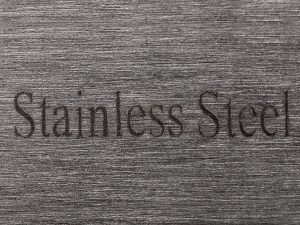Recently, I talked about why a well constructed with more expensive, but durable, materials, may be the least expensive well over its lifespan. This is due the fact that some of those more expensive materials typically last longer and have longer well rehabilitation intervals than less expensive materials.
One place where we see people trying to save costs on well construction is through the use of mild steel casing coupled with stainless steel screens. On the surface, it seems like a good way to reduce the up-front cost of the well since the mild steel casing may be a half to a third the price of the equivalent stainless steel.
The problem, of course, is galvanic corrosion, an electrochemical process in which one metal corrodes preferentially when it is in electrical contact with another. Ultimately, this will manifest itself as pitting and holes in the lower quality steel. The rate of the corrosion can be accelerated by groundwater more conducive to corrosion.
While stainless steel may not always be necessary, the use of dissimilar metals in well construction should be avoided. If a corrosive environment exists, then stainless should the material of choice. The Langelier Saturation Index (LSI) test is one way to determine the potential corrosiveness of groundwater. The LSI takes into account alkalinity, pH, calcium, total dissolved solids and water temperature to determine the potential for the groundwater to form mineral incrustations (positive LSI) or be corrosive (negative LSI). We often run an LSI test during test hole drilling, but an indication of corrosion potential can be obtained using an LSI result from a nearby well also.
A good example of this is a well we recently assessed that was having severe sanding issues. There was a discrepancy between the well driller’s log which showed the use of stainless steel casing between two screened intervals of wire-wrap stainless steel, and the actual construction of the well, which indicted that mild steel had actually been used instead of stainless. A dynamic well video survey taken under pumping conditions showed substantial corrosion in the casing interval, with large holes allowing water and sand to pour into the well casing as the well was drawn down during pumping. Substituting mild steel casing in this well for stainless has resulted in a substantially reduced life span of the well or, at a minimum, a large expense for well repairs.

